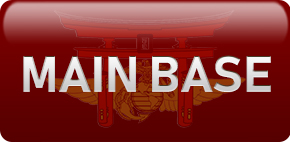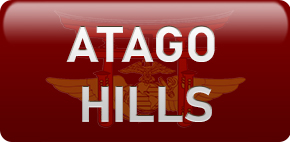Mission
 The mission of the Environmental Division is to support and advance the Air Station's Environmental program on a daily basis by preserving our natural resources and protecting the health of our base residents and Japanese hosts and neighbors, in such a manner that supports the military and quality of service mission of MCAS Iwakuni.
The mission of the Environmental Division is to support and advance the Air Station's Environmental program on a daily basis by preserving our natural resources and protecting the health of our base residents and Japanese hosts and neighbors, in such a manner that supports the military and quality of service mission of MCAS Iwakuni.
Intent
The intent of this webpage is to share knowledge, list point of contacts, and provide important information in the event of an emergency. We are committed to promoting responsible stewardship while continually improving environmental performance through an effective and efficient Environmental Management System (EMS), which ensures relevant documents, guidance, orders, policies and contacts are available. The intent is to ensure an open flow of information both internally to the Environmental Office as well as to service members, civilians, Unit Commanders and installation tenants.

GARBAGE SEPERATION RULES
Please click the links below to view separation rules for your area.


SPILL PREVENTION AND RESPONSE PROGRAM (SPRP)
The Spill Prevention and Response Program is designed to protect the installation and surrounding environment from POL/HazMat spills and releases. The SPRP focuses on preventive practices and actions that help mitigate any potential for a spill to occur. However, should a spill occur, the SPRP provides response and advisory capabilities to the installation in order to aid in containment and clean-up efforts. To aid in the accomplishment of this mission, the SPRP: Maintains records of all spills across all installation activities; Monitors organizational activities through the conduction of scheduled, un-scheduled and no-notice inspections of activity spaces and areas; Provides advisory inputs to leadership to aid in prevention, response, containment and clean-up actions; Investigates sources and causes of spills; Enforces environmental regulations, orders and policy; and Reports on compliance issues and issues of non-compliance.
Recycling Program
Quick Reference Guide

Frequently Asked Questions
FAQ
There are no known archaeological resources present on any lands currently under the management control of MCAS Iwakuni.
Four historic resources were identified during the cultural resources inventory survey conducted at MCAS Iwakuni in 2009.
 |
Zero Hangar: built in 1940 as part of the Japanese Imperial Naval Base. The structure is an original convex shaped, reinforced concrete, single airplane hangar that was used to house the Mitsubishi Type “Zero” Carrier Fighter Model 21 during World War II. The hangar was the only one of six to survive a U.S. bombing attack on Iwakuni at the end of World War II. Large craters on the front of the hangar, formed by fragmentation from the bombing, are reminders of the air stations military history. It has been refurbished and transformed into a visitor center.
|
 |
1st MAW Vietnam War Memorial: dedicated in May 1972, to commemorate members of the 1st MAW that gave their lives in Vietnam. The monument is significant to the history of the U.S. Marine Corps for its ability to represent the untiring dedication of Marines to the principles of duty, honor, courage, and most of all freedom.
|
 |
Building 360: was originally constructed in 1940 as part of the Japanese Imperial Naval Air Base. It is rumored that Admiral Isoroku Yamamoto signed the order for the attack on Pearl Harbor in the Crow’s Nest (third floor) of the building, but proof of this rumor is unsubstantiated. The building has been modified over the years and is no longer in its original condition.
|
 |
Yuhi Monument: located next to Japan Maritime Self Defense Forces (JMSDF) headquarters, was established in November 1978 to console 13 crew members’ souls. They were killed in a plane crash in Kochi Prefecture on May 7, 1978. A good representation of Japanese gardens, it gives Air Station Members a chance to view an ancient Japanese art form.
|
The Tank Management Program (TMP) is designed to monitor and regulate all Aboveground Storage Tanks and Underground Storage Tanks, and their associated pipes, fittings, valves, structures, appurtenances, monitoring devices, alarms, gauges, protection devices and secondary containment spaces across the installation. The TMP provides resources to tank owners/operators such as inspection requirements, maintenance requirements, operational limitations and more, in accordance with applicable industry and environmental standards. The TMP enforces environmental regulations, orders, policy and industry standards and reports on compliance issues and issues of non-compliance.
タンクマネージメントプログラム(Japanese Translation of TMP)
Main office: 253-3388
Environmental Management System: 253-4854
Water Program: 253-5388
Air/ODS/Radon Program: 253-7371
Spills & Tanks: 253-3909
Emergency Spill Notification: 911 / 253-3322, From cell phone: 0827-79-3322
Hazardous Waste: 253-6963
PCB: 253-5038
Solid Waste/Recycling Program: 253-3241, E-mail: iwakuni.recycle.center@usmc.mil
Culture/Natural Resources: 253-5466
Compliance:253-3908 / 3906 / 5423
Training-CETEP:253-3910
Please click here to see the frequently asked questions and answers regarding Environmental Division.